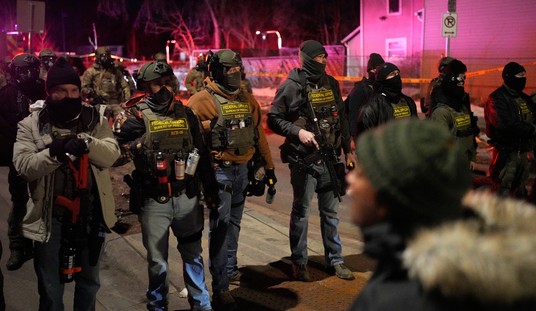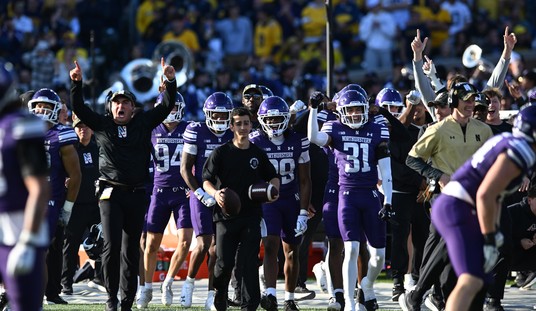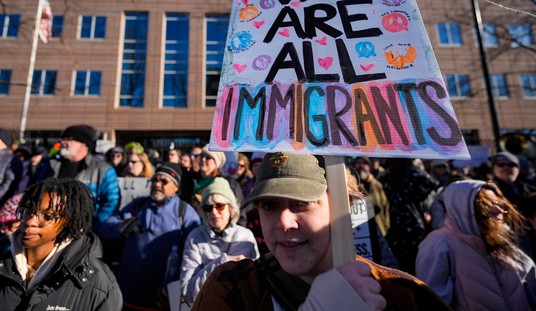This isn’t the first time this guy has jumped the gun on pushing an extra dose. You would think he’d learn that the more he signals that the vaccine regimen is indefinite, the more likely it is that those who are ambivalent about an additional dose will decide not to bother. If you’re iffy about a third shot, how much iffier will you be when you learn that a fourth might follow soon behind?
I mean, I’ll get the fourth shot. I get a flu shot every year, so why not? But by the time this is over, the only ones left still getting jabbed will be me and like six other people.
The real news in this clip, I think, is that Bourla seems to think the heightened immunity generated by the third dose won’t last very long. At least, not against Omicron. Watch, then read on.
"I think we will need a fourth dose. I have said that multiple times," says @pfizer CEO @AlbertBourla on Israel's roll out of a fourth Covid vaccine dose. "If there is a need for something different, better, we will be able to have it in months." pic.twitter.com/FFA28uXgs7
— Squawk Box (@SquawkCNBC) December 8, 2021
If it seems like the reaction from experts to the new variant is schizophrenic, with some news optimistic and some pessimistic, there’s a reason. It’s because different aspects of the data feed each of those impressions. The numbers on virulence are optimistic, with Europe yet to see a single severe case among hundreds of infections as of yesterday. If Omicron is so mild that hardly anyone needs hospital care for it then maybe it’s a blessing in disguise, a sort of “transmissible vaccine” in which everyone gets infected, no one gets very sick, and suddenly the whole world has immunity and the pandemic is over.
The numbers on transmissibility, on the other hand, are wildly pessimistic. In August, one biologist told NPR that the Delta variant was one of the most highly contagious respiratory viruses known to man. Four months later, here’s what we’re looking at with Omicron:
The omicron variant of Covid-19 is 4.2 times more transmissible in its early stage than delta, according to a study by a Japanese scientist who advises the country’s health ministry, a finding likely to confirm fears about the new strain’s contagiousness…
“The omicron variant transmits more, and escapes immunity built naturally and through vaccines more,” Nishiura said in his findings, which were presented at a meeting of the health ministry’s advisory panel on Wednesday.
It’s not just lightning fast, it’s able to break through and infect some people with immunity whom Delta couldn’t puncture. A virus that’s insanely transmissible and capable of infecting a huge majority of the population will inevitably reach millions of people with weak immune systems due to age or underlying illness. Will their symptoms prove “mild” too? Even if Omicron kills only a few of them, how many will need hospital care at a moment when the entire world is getting infected and competing for beds?
At this point, the CDC has recorded that less than a quarter of adults who are fully vaccinated under the existing definition have gotten a third shot. That leaves about 150 million people who are vaccinated but unboosted. Given that the people in this group are less protected against infection, they’re at greater risk of passing on the disease to unvaccinated or partially vaccinated kids, as well as to unvaccinated or immunologically vulnerable adults. They will also pass the coronavirus more readily among themselves…
Here’s the upshot: Each fully vaccinated person might still be at minimal risk of getting seriously ill or dying from COVID this winter, but the vestiges of normalcy around them could start to buckle or even break. In the worst-case scenario, highly vaccinated areas could also see “the kind of overwhelmed hospital systems that we saw back in 2020 with the early phase in Boston and New York City,” Samuel Scarpino, a network scientist at the Rockefeller Foundation’s Pandemic Prevention Institute, told me. If only a small percentage of Omicron infections lead to hospitalization, the variant is still spreading with such ferocity that millions of people could need a bed.
Such a scenario would be especially dangerous if those millions of people all needed a bed at the same time.
People with two doses of the vaccine might be protected from severe illness, but then again they might not. Especially if they’re old, since the immune system’s “memory” fades with age. The elderly might not muster much of a response to Omicron even if they’ve had two doses of the vaccine.
Here’s a thought experiment. If you were given the choice between the U.S. suffering an outbreak of Ebola and an outbreak of the flu, which would you choose? Instinctively we’d all choose flu since it’s familiar and the symptoms are mild in almost everyone whereas Ebola is lethal, gruesome, and foreign. But rationally, that’s the wrong choice. We had an outbreak of Ebola in the United States in 2014, remember. A grand total of two people died. Why? Because Ebola, while extremely virulent, isn’t very transmissible. You can’t catch it through the air, only through contact with an infected person’s body fluids. In a rich, sophisticated country like ours, it’s easy for public health authorities to identify an outbreak and to shut it down by isolating people.
The flu, on the other hand, kills tens of thousands of people in an average year despite the fact that its infection fatality rate is far below one percent. That’s because it’s airborne and highly transmissible, and therefore ultimately finds a way to reach infants, the elderly, the immunocompromised, and other people at risk of a fatal case. A very contagious virus doesn’t need to be very lethal to kill a ton of people, as SARS-CoV-2 further demonstrates.
Now here we are with Omicron, faced with what looks to be the most infectious respiratory pathogen ever encountered by human beings. How mild would a virus like that need to be in order to not leave a giant body count?
In fact, the early evidence about its alleged mildness may be misleading:
A sketch to explain how a new variant may appear milder even with no change in underlying virulence. This can occur because, when calculating the fraction of cases that are severe, the denominator now includes many re-infections that had previously been averted. A thread. 1/8 pic.twitter.com/XxrYHnb6XY
— Natalie E. Dean, PhD (@nataliexdean) December 9, 2021
Obviously it’s great if people with immunity from vaccination or from a previous infection routinely have only mild symptoms after catching Omicron. The point Dean’s making, though, is that a variant that can reinfect people who have prior immunity may appear milder than it really is early on because those people are better equipped to fight it off. There’s still a gigantic population of non-immune people globally and here in the U.S. who are at very high risk of infection from Omicron — including from the vaccinated, given how capable the variant is of causing breakthrough infection. What happens when they catch it? Will it be mild for them too or will it be a killer? We’re going to find out because, if the data on transmissibility is accurate, pretty much all of us are going to get it.








Join the conversation as a VIP Member